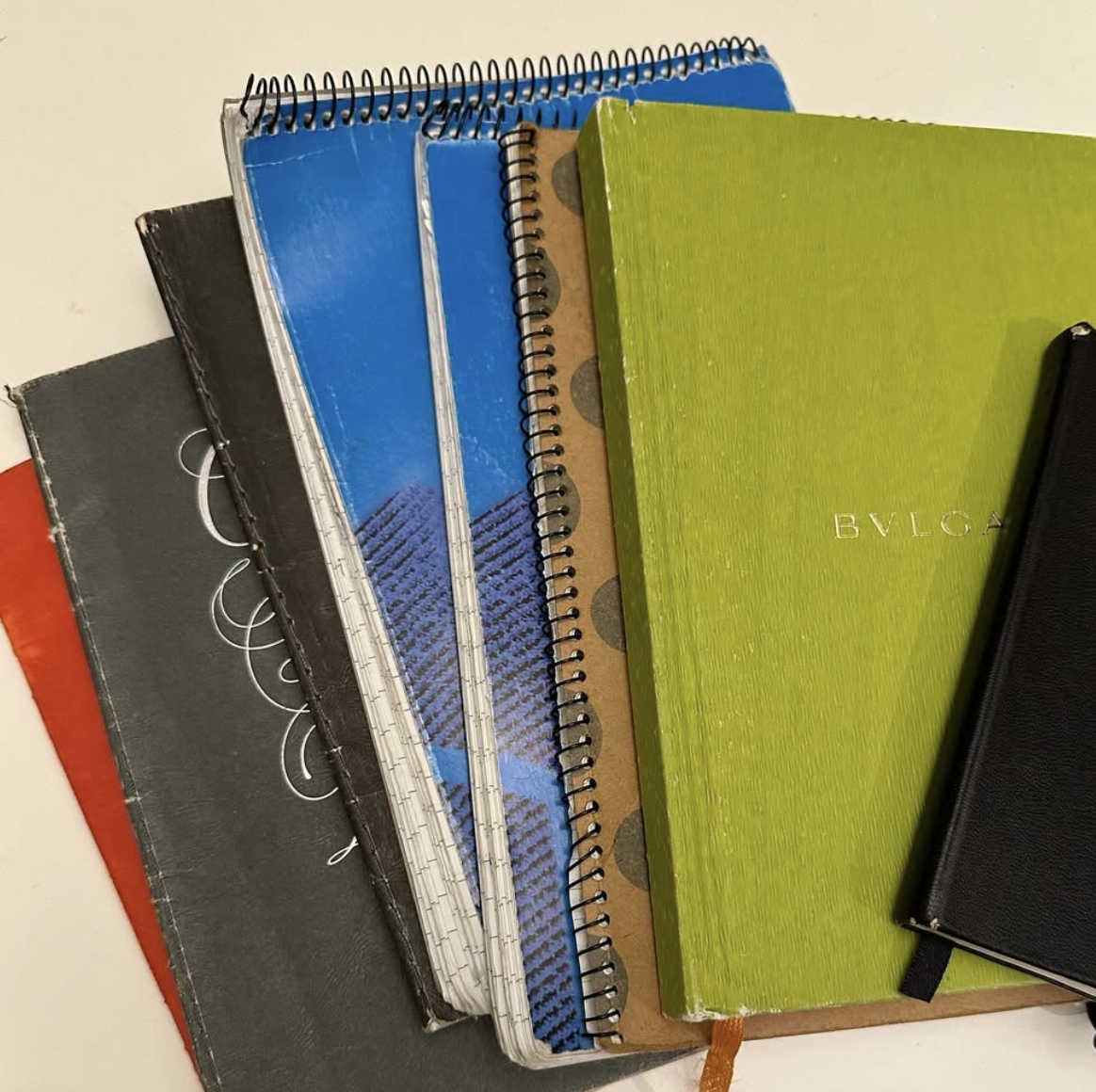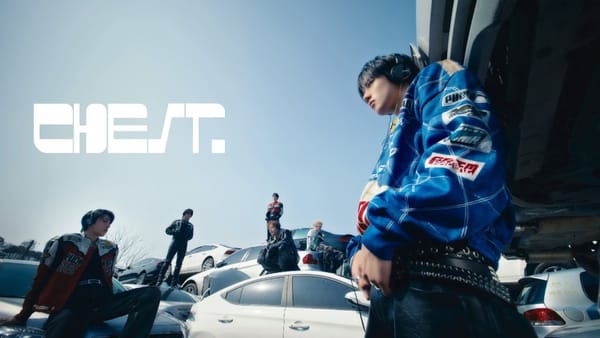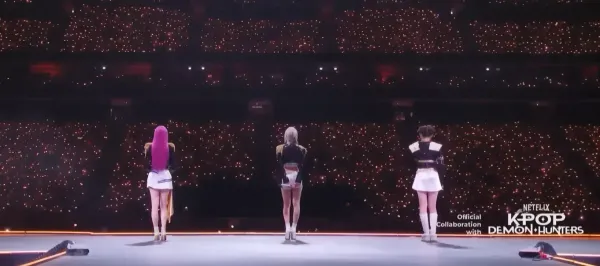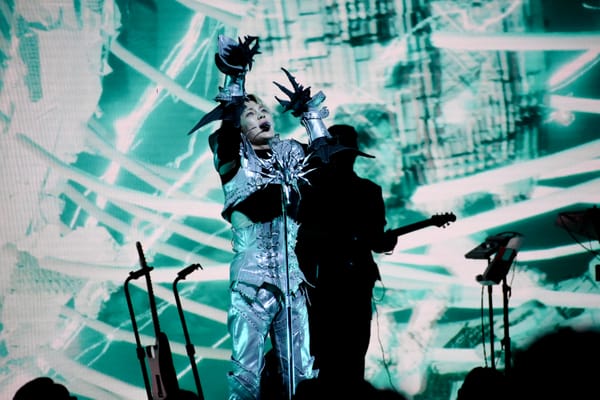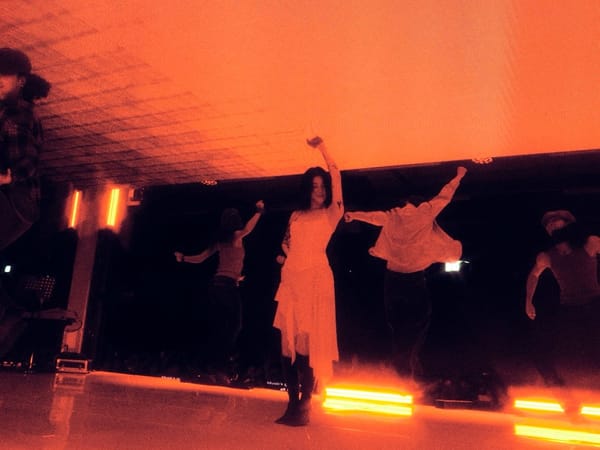The K-Pop Fandom Ecosystem: Group Orders & What They Create
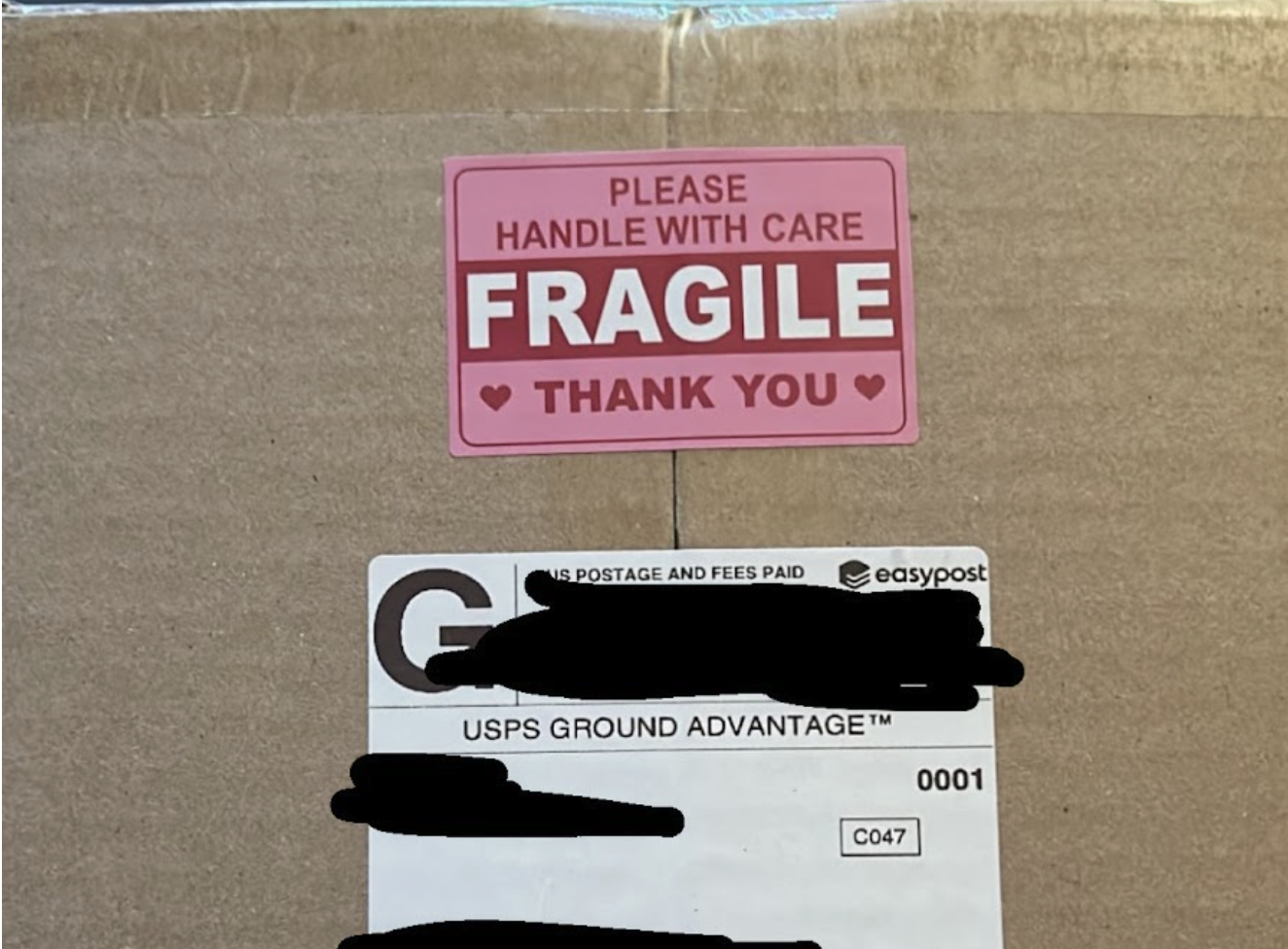
Katie Doan is one of Notes on K-pop's summer fellows. She is a multimedia storyteller with a keen focus on Korean pop culture. After graduating with a Bachelors in broadcast journalism from California State University, Fullerton, she now works in activism.
Tamar: When Katie pitched doing a piece built around group orders and fan merchandising practices, I felt it was a great, underreported topic given how much money there is in fandom. This is a part of K-pop fandom that I've never really participated in for one reason or another, and I was eager to hear what sort of insight Katie's reporting would shed light on. Running a small survey while writing this piece - and starting a new job (!!!!)-, I feel Katie's piece sheds light on one of the most interesting cottage industries out there. It's even inspired me to try out GOs!
The K-Pop fan community ecosystem can be incredibly vast. It can be complex to outsiders due to there being so many moving parts: fan translators, influencers, update accounts, streaming goals, cupsleeve events, etc.
Although I have been a fan of K-Pop since 2010, when I was a teenager, I haven’t interacted much with the collecting side of the community until recently; I became more interested in photocard collecting when that trend exploded during the pandemic. I used to be one of those people who bought the album, pulled out the photocard and stuck whichever it was behind my clear phone case. Today, you can’t even get away with that without collectors reprimanding you for not protecting it.
Nowadays, there are so many avenues how a K-pop fan can interact with their fandom, but nothing is more complicated than joining a group order, let alone managing one.
A group order (GO) is, according to Delivered Korea, a “merch-buying activity where fans add their personal orders to a shared online cart or basket at the same time”. Perhaps the closest equivalent is going to Costco and buying wholesale, only to re-sell individual items. But in this case, it’s for idol merchandise, with fans acting as the wholesalers, consumers, and resellers.
While there are also GOs for fan-made merchandise or other sorts of official non-album merch, the most popular GOs are for albums. Further information in this article primarily refers to album GOs.
Group orders can range in complexity, but typically they’re a cottage industry-style side hustle that is managed by spreadsheets to track orders and forms to track purchases and shipping addresses.
In order to understand how incredibly important group ordering and group order managers (also known as GOMs), we must look at how we get here.
Background
Anybody who grew up listening to K-Pop will understand how difficult and nearly impossible it was to purchase a K-Pop album in the early days of the scene becoming popularized in the US. While a K-Pop fan in the US today can simply head into Target or Walmart to purchase their CDs on release day, or order them directly from artists’ sites, many of us before relied heavily on dealing with the migraine-inducing pain of having to purchase their albums on Korean online websites (if they even offered international shipping), overpriced K-pop album resellers, or through joining a group order (usually run by specific fanbases).
I still remember being elated to purchase my first K-Pop albums ever at a mom and pop music store locally. Although I paid a premium ($60 in 2011!), the fact that I had a physical copy of BIGBANG’s Special Edition was euphoric. Mind you, K-Pop songs weren't easily accessible on Spotify and Apple Music back then, so this was truly the only time I could have a surefire way to listen to a high quality version of this album.
And this is just for K-Pop albums. What about getting a lightstick? Official merch? The fanmerch circulating only in certain Asian countries, but that every single fan seems to have? Even more difficult. That’s where group orders and group order managers came into the picture.
Okay, break it down for me. What is a group order? What are group order managers? Why is this even important?
Idol merchandise is an important part of the K-Pop fandom experience. Arguably the second most important thing a dedicated K-Pop fan can do to support their groups after attending concerts is buy merch, including albums. It’s strongly associated with the success of an idol group, particularly as high album sales lead to charting, awards, and can even fuel continued support from an act’s company. The industry, like every capitalist entity, cares about their bottom line. If a group isn’t performing well, the company may disband the group due to lack of interest.
Group orders are a fantastic way to support idols, especially when dealing with purchasing a lot of items at once. Of course, someone can simply go and purchase these items themselves, but this can get complicated very quickly. Some merchandise can only be sent domestically within Korea (or Japan for Japanese releases), while others have high shipping costs. A great way to save a bit of cash is to join a group order or host a group order.
It’s typically organized by a group order manager (known as a “GOM”) who coordinates everything under the sun including:
- Buying said merchandise from the shop, if online
- Coordinating with people (proxy) to buy merchandise from a limited in-person pop up or store offline
- Keeping track of orders and accounting
- Sorting inclusions to ensure fan-customers (joiners) get the certain items (i.e., their favorite member)
- Collecting payments from joiners such as the item cost and all shipping costs including customs
- Sending and storing merchandise at an international address like a Korean address (known as “kaddy”)
Like almost all fan-created fandom activities, GOMs do all of this for free. Oftentimes, they foot the bill to cover shipping materials, and spend their own personal time packing and fulfilling these orders.
So what are the pros and cons for joining a GO?
I conducted a little survey within the K-Pop collecting community back in July. Thirteen people responded, with over 50% of them between the ages of 25-34. Most identified as women (92%), and nearly 70% answered that they were joiners, while the rest were either GOMS exclusively, or a bit of both. A handful of them collect or operate GOs for BTS, but some other fandoms included ATEEZ, SEVENTEEN, NCT, and Kep1er.
These are some of the common positives:
Lower shipping costs
Despite the fact that K-Pop is easier to access now than in previous years, many items are still being directly shipped from South Korea, leading to high shipping costs.
By buying in bulk, the shipping costs are divided up amongst the joiners, making it cheaper overall for everyone.
For example, Weverse Shop, managed by HYBE, has higher shipping costs depending on the region selected. Ordering from the Global store usually costs twice as much as from the U.S. shop, but the advantage is getting the item on release day rather than months later.
However, the Korean FTC has charged these direct-from-company online retailers with unfair trade practices in the past, some of which include barring customers to get refunds for lost merchandise after shipment and not providing refunds in a timely manner.
Priority perks
Before GOs became popular, a K-Pop collector typically dealt with the items included (ie “inclusions”) in the copies of an album that they themselves would purchase. These items were randomized like a blind box, and it encouraged fans to collect all inclusions by purchasing more copies, thus boosting album sales for the group. Otherwise, they’d have to specially hunt for inclusions sold by resellers on social media or sites like Ebay or Mercari. From a collecting standpoint, it can get expensive very fast if you continue to test your chances (we’ve all been there!)
As a result, GOMs commonly implement a sorting process in which a joiner can select which members’ photocards they want to get as priorities. This alleviates the burden for the joiner to fall for the blind box tactic, instead getting exactly what they want. According to my survey, this was the number one reason why fans joined GOs, especially for those who collect photocards of popular members. Since photocard value changes by rarity, demand, and the popularity of the member, fans are incentivized to join GOs to avoid paying a lot in second hand resale markets.
@yuqisfavgir1 yuiq left flabbergasted.. #kpopfypシ #fypシ #foryoupagе #yuqi #minnie #soojin #miyeon #soyeon #shuhua #yuqisfavgir1 #viral #gidle ♬ original sound - yuqis REAL wife 😚💗
Getting exclusives
With the pandemic shutting down many an idol group’s main stream of income (touring), companies had to be innovative in how to minimize that loss. Although store-exclusive inclusions have existed prior to the pandemic, K-pop companies really began pushing them, especially in the US, during this period after seeing the demand go up exponentially during the COVID lockdown. K-Pop fans started to take collecting these inclusions more seriously, buying more album copies and merchandise to complete collections. This was not a niche phenomenon to K-pop, with collections in general becoming a popular lockdown era phenomenon, including people collecting things like vinyls and Pokémon cards.
Due to the exclusivity of some photocards only being shipped within Korea, GOMs specifically often target store-exclusives for their customers in their home region, running GOs for preorder benefits (POBs), and lucky draws (additional random photocards given by a store after the preorder period is over). There are a plethora of stores too; you can ask a NCTzen (NCT fan) how many stores participate in giving away exclusives and they’ll tell you with an exasperated sigh. (Hang in there, you guys!)
Photocard templates of NCT’s “2 Baddies” era, consisting of album photocards, in-store and region exclusives, and in-person event gifts.
Perk for GOMs
GOMs can host a GO to help themselves get into fansigns (a promotional event where idols sign fan’s albums) or very recently, enter to win a fancall (another promotional event where idols do 1-on-1 video calls with a fan). These events also issue exclusive photocards for joining and winners can also get a signed album or other sort of item as well, making it even rarer. By coordinating a GO, the GOM ends up buying, and reselling, the albums needed to boost their chances to get into these fan event lotteries.
Outside of the realm of photocards, GOMs can conduct GOs for in-person pop ups or events that typically last a week or two. While many GOMs go themselves, they may ask someone (a proxy) to pick up the items for the GO.
“Group orders also cover a lot of fanmade goods from all over the world (i.e. Dolls, stickers, fanart, etc.), which is particularly helpful when you are not from the source country and don't have a local address/forms of payment,” said Sophia from Manila when responding to my survey. “There are also generally more flexible payment options if you transact through a GO, especially if you just ask for one.”
GOMs can also grab items from certain markets such as Japan and China where exclusives may be locked by membership to a fanclub or no international shipping.
But while there are some positives, there's also a multitude of headaches when being a part of a GO.
The learning curve
The K-Pop collecting community has a steep learning curve. Many terms and basic practices for GOs are rarely or sometimes not explained at all, leaving many joiners having to ask what’s going on and how to navigate. From personal experience, I had to learn all of these terms, occasionally spending several minutes reading a GOM’s terms and conditions many, many times before joining their GOs. Each and every GOM is different, which makes it harder for a new collector to gauge how well the GO is going.
It’s easy to get lost on how the typical GO process goes, but it usually goes in this order:
- Interest check: A GOM posts, seeing who’s interested in getting a certain item to the public.
- Claims: Joiners can claim a certain item(s). Oftentimes this is done on a first come, first serve basis.
- Collecting payments: The GOM will ask for initial payment, usually for the item itself. Later, the GOM can ask for EMS (express mail service, or shipping from the source to the GOM) and Doms (domestic shipping from the GOM to the joiner).
- Address confirmation: Before collecting doms, the GOM will ask for your address to calculate shipping to you. They will also re-confirm the address prior to shipping your item.
- Packing/shipping: GOM packs and sends the item to you. Sometimes they’ll send proof that they packed the item well.
- Delivery confirmation: Once the item is delivered, the GOM asks joiners to post that they received the item to establish proof (proofs) that they delivered the item. Joiners can also leave feedback.
A good GOM will and should have open communication with their joiners for all kinds of updates, utilizing broadcast channels or group chats.
Unfortunately, this isn’t always the case. Depending on certain items, joiners face dealing with long wait times. According to the survey, joiners have waited usually between a month or two but up to over 6 months in extreme cases for their items. In cases where it’s longer than expected, it can make a joiner anxious when there aren’t any updates from the GOM. Typical situations that arise for the delays can be the production time and items being stuck at the post office/shipping port for customs.
Other times, a GOM may be so disorganized that they lose track of items. In one instance, Stacy, a BTS collector based in California had to go through back and forth with emails for months because a GOM had forgotten they had placed an order with them.
On the flip side, GOMs also deal with the slow or no responses from joiners, leading them to chase after payments or addresses. Since GOMs don’t have the space and a complex inventory system of a warehouse, GOMs end up having these items for months with no response from joiners to move along with the process. Recently, I saw a BTS GOM post several stories expressing her frustration about this, repeating what many GOMs usually say, “I’m not a warehouse.”
No buyer protection
Because GOs are managed by fans, there is hardly any, if any, buyer protection. In fact, GOMs make it very clear that joiners send payment without buyer protection (i.e., Paypal’s Goods & Services) to avoid additional fees, taxes, and fraudulent activities. This opens the joiners up to be potentially scammed if stuck with a GOM who will use that to their advantage.
There have been many instances where joiners have joined a GO and the GOM disappeared completely with their items. In these cases, joiners cannot ask for their money back as it’s done without protection.
Interacting with rude people
Due to the lack of or bad communication, both joiners and GOMs have endured all kinds of nasty behavior.
“The GOMs themselves can be really entitled and pretty rude even when just asking simple questions,” said Diyami, a multi group collector based in Los Angeles. “A lot of GOMs will also pressure you into claiming an item.”
Similarly, GOMs have had demanding or aggressive joiners.
“My worst experience is when a joiner accused me of stealing their early bird POB,” said Peā, a BTS GOM based in the U.S. “Even though they joined my GO two weeks after the early bird period ended and therefore did not qualify to get one.”
“I once had a joiner accuse me of purposely damaging a PC and sending it to them,” Kimberly said, who hosts GOs for BTS in the U.S. “I’m not sure what happened but the joiner came at me so aggressively instead of trying to be understanding and work out a solution.”
“Ultimately, they just ended up keeping it because there was nothing that could be done. The PC/DVD came from Weverse and GOMs are not responsible for damage like that.”
A GOM’s lack of customer service skills can also lead to disastrous results as their reputation and credibility is on the line. If any of it is compromised, the GOM could be blacklisted by the community.
These pros and cons are just a tip of the iceberg when it comes to GOs and the collecting community. There is a lot more I didn’t cover, and the community is still evolving as we speak. It definitely has a lot to work on. GOMs come and go due to the workload they face for free and joiners have been burnt from losing their money from unreliable GOMs. As K-Pop gets more and more expensive, being a fan takes a toll. Whether you’re dealing with high ticket prices to frequent merch drops, everyone involved is feeling the weight of the costs. It’s not easy at all, which is nuts considering that the goal of supporting your artist shouldn’t be that hard.
Joining GOs can be a great risk, but can also be a great reward for everyone involved. The K-Pop space can be terribly hard to navigate, but the complexity of this subculture is what is so appealing in the first place! I know collecting specifically opened a whole new world in how I stanned my favorite groups. It can be really fun being able to get that photocard you’ve been dying to get even if it burns a hole in your wallet in the process. I know it does for me.
I’m looking at you, Memories 2017 Blu-Ray Jungkook.
